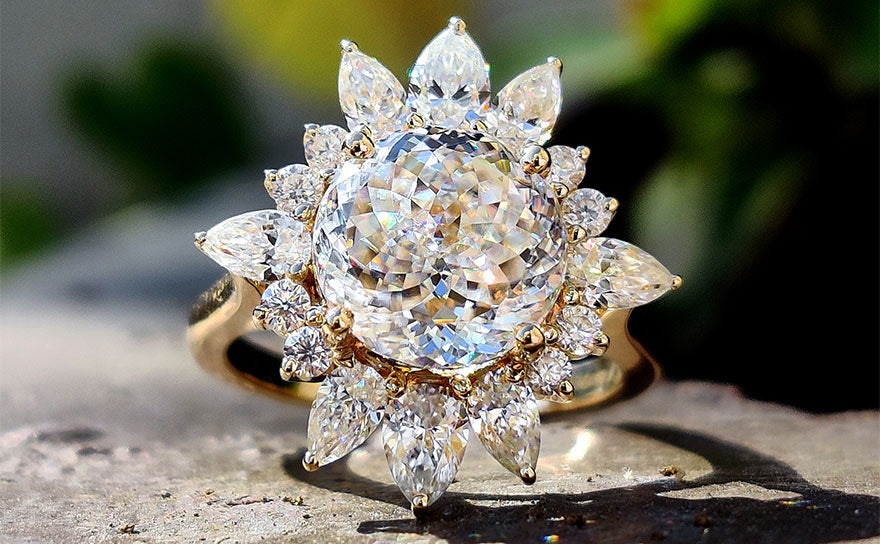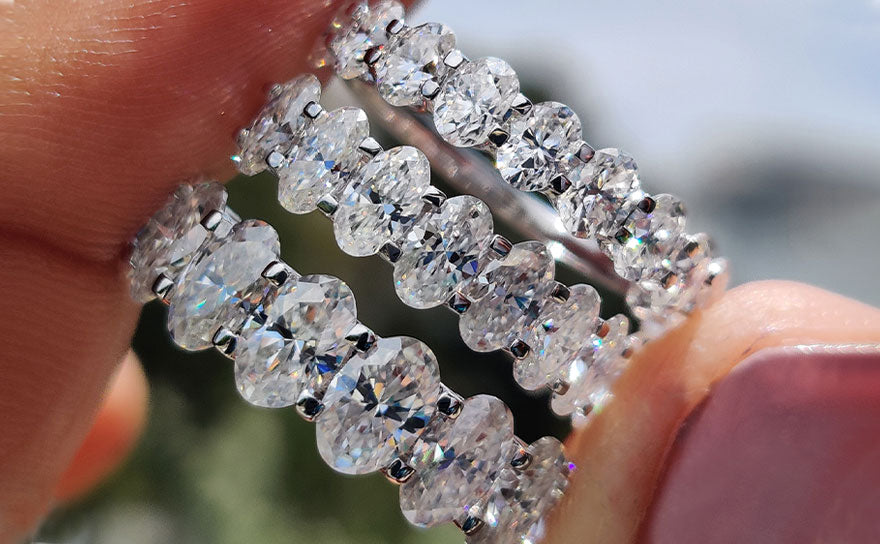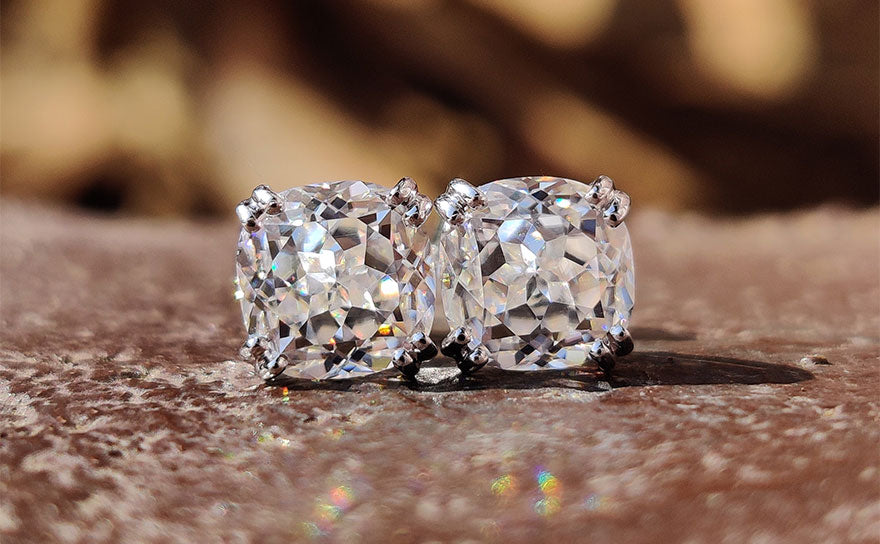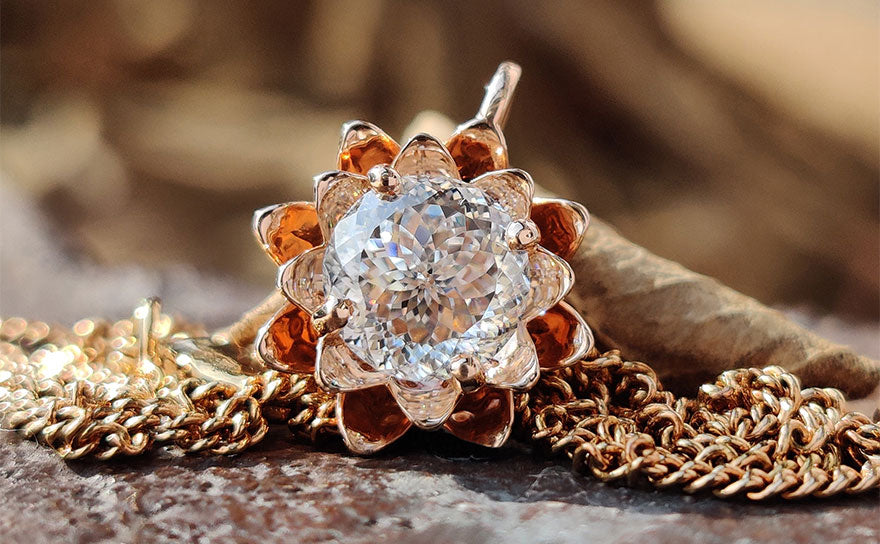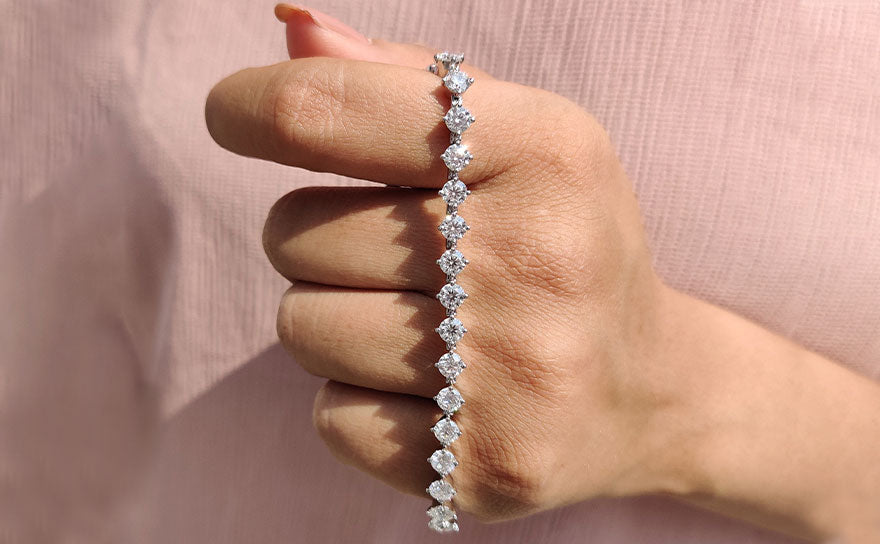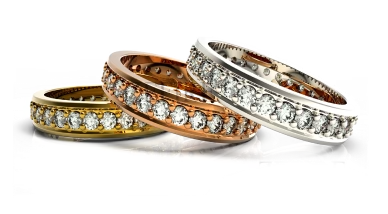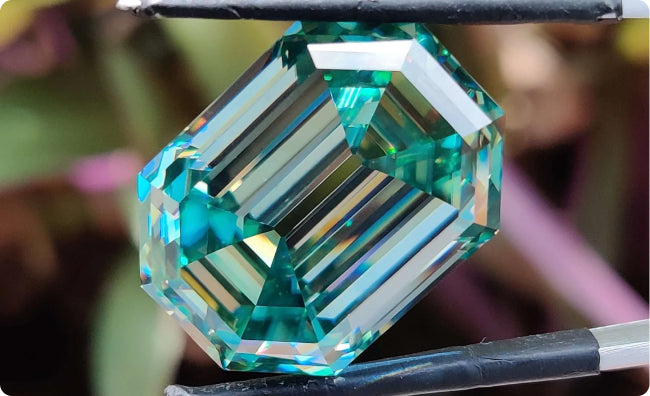-
30 Days return policy
-
100% Money back guarantee
-
Quality assured
Why Choose Moissanite?
Mining Free
Moissanite is a responsible choice since they are with precise technology that involves no mining.
Beauty & Quality
Moissanite has nearly same hardness, more brilliant and fiery compared to natural diamonds.
Value
Moissanite provides outstanding value compared to diamonds, allowing you to get the most out of your budget.

Shop Moissanite By Category

Moissanite vs Diamond?
Moissanite and diamonds differ notably. Moissanite, composed of silicon carbide, is lab-created, offering a more ethical and eco-friendly choice. It's renowned for superior brilliance and fire due to a higher refractive index, creating vibrant light displays. Diamonds, made of carbon, are the hardest known mineral (10 on the Mohs scale), boasting exceptional durability. Moissanite is significantly more affordable than diamonds, making it an attractive option for those seeking a diamond-like appearance without the high cost. While diamonds hold traditional value in jewelry, especially engagement rings, moissanite is gaining popularity for its sustainability, cost-effectiveness, and dazzling sparkle. The choice between them often hinges on personal preference, budget, and ethical considerations.

How is Moissanite Made?
Moissanite is created through a sophisticated lab process known as the thermal decomposition of a preceramic polymer, specifically silicon carbide (SiC). The process, refined over years, involves several key steps:
- Creation of Silicon Carbide Powder: The process starts with the production of high-purity silicon carbide powder. This is achieved by combining silicon and carbon in a controlled environment.
- Formation of Crystals: The silicon carbide powder is then subjected to high temperature and pressure, mimicking the natural conditions under which diamonds form. This environment promotes the growth of large silicon carbide crystals over a period of several weeks.
- Cutting and Polishing: Once the crystals are formed, they are carefully cut into gemstone shapes using precision tools. The cutting process is crucial as it determines the brilliance and fire of the final gemstone. After cutting, the stones are polished to achieve a high-quality finish.
Moissanite vs Lab Grown Diamond vs Diamond
Diamonds own the charts of beauty but alongside they toment the natural resources as well as your pockets. Lab Grown Diamonds are same as natural diamonds chemically and physically.Developed after hundred years of compression of carbon derivatives whereas moissanites are still named to come from stars, these and many more differences makes this quetion important to be answered, Moissanite vs Diamond?
Choosing a crystal derived with the hustle of clearing land and landforms only to achieve a crystal for your finger is something against natural percepetions, whereas moissanite is achieved with the way approchable beauty without fuss, totally mining free.
Moissanite
Moissanite is the one sparkling diamond born in the lab with the help of an artist gem cutter. It was first discovered by the french scientist "Henri Moissan" in 1893. Moissanite is the second hardest to diamonds on the Mohs hardness scale.
Lab Grown Diamond
On the whole, lab diamonds possess the same physical and chemical properties as natural diamonds; moreover, in terms of appearance, both natural diamonds and lab diamonds are the same, but the main difference between them is their manufacturing process.
Diamond
Diamond is a solid form of pure carbon with its atoms arranged in a crystal. Diamonds are discovered through mining, which requires a lot of labor to dig up and find the diamonds. After that, they are cut and shaped by an artist's gem cutter to obtain their perfect shape.
Gives new turn to your special occasion with this elegant Moissanite by the Diamondrensu! The lab grown diamonds (which are also known as eco-friendly diamonds, lab created diamonds, conflict free diamonds, man-made diamond, etc ) are man made diamonds crafted in the lab. Lab Grown Diamonds are better alternative to a natural diamond. If you wish to buy an engagement ring or other piece of jewelry in budget lab grown diamond is an option.
Natural Diamonds are spectacular because their hardness rating is 10, and they are super sparkly. However, the price of these stones is a drawback. As compared to Moissanite and Lab-Created Diamonds, natural diamonds are too expensive.

Facts about Moissanite
- Astronomical Origin: Moissanite was first discovered in 1893 by Dr. Henri Moissan in a meteor crater. This rare, natural occurrence is composed of silicon carbide (SiC) and is often lab-created today, mirroring its unique extraterrestrial properties.
- Exceptional Brilliance and Fire: Moissanite is known for its outstanding brilliance and fire. It has a higher refractive index than diamonds, which results in greater sparkle and a vivid display of colors, especially under light.
- Remarkable Durability: Ranking at 9.25 on the Mohs scale of hardness, Moissanite is one of the hardest substances on Earth, second only to diamonds. This makes it extremely durable and suitable for everyday wear in jewelry, resisting scratches and damage.
Have Any Questions?
Moissanite is a lab-created gemstone known for its diamond-like brilliance and durability, popular as an ethical, budget-friendly alternative.
Moissanite is created in labs using a process called silicon carbide crystallization, replicating its natural formation for a durable, brilliant gemstone.
Moissanite ranks 9.25 - 9.50 on the Mohs scale, making it highly resistant to scratches and ideal for daily wear.
Yes, moissanite closely resembles diamonds with its high brilliance and clarity, making it a convincing and attractive alternative.
No, moissanite maintains its clarity and sparkle over time and does not become cloudy, ensuring lasting brilliance.
The term "oil slick" in the context of moissanite refers to a particular visual effect that can occur on the surface of these gemstones. This effect resembles a pattern of rainbow-like colors, similar to the sheen of oil on water. It's important to note that this is not a flaw or a defect in the moissanite itself.
Yes, in most cases, the "oil slick" effect can be minimized or removed. Professional jewelers often use specific cleaning methods and solutions to gently remove any surface coatings without damaging the gemstone. It's advisable to consult with a moissanite specialist or a reputable jeweler for proper guidance and cleaning services.
Moissanite is a lab-created gemstone known for its diamond-like brilliance and durability, popular as an ethical, budget-friendly alternative.
Moissanite is created in labs using a process called silicon carbide crystallization, replicating its natural formation for a durable, brilliant gemstone.
Moissanite ranks 9.25 - 9.50 on the Mohs scale, making it highly resistant to scratches and ideal for daily wear.
Yes, moissanite closely resembles diamonds with its high brilliance and clarity, making it a convincing and attractive alternative.
No, moissanite maintains its clarity and sparkle over time and does not become cloudy, ensuring lasting brilliance.
The term "oil slick" in the context of moissanite refers to a particular visual effect that can occur on the surface of these gemstones. This effect resembles a pattern of rainbow-like colors, similar to the sheen of oil on water. It's important to note that this is not a flaw or a defect in the moissanite itself.
Yes, in most cases, the "oil slick" effect can be minimized or removed. Professional jewelers often use specific cleaning methods and solutions to gently remove any surface coatings without damaging the gemstone. It's advisable to consult with a moissanite specialist or a reputable jeweler for proper guidance and cleaning services.

